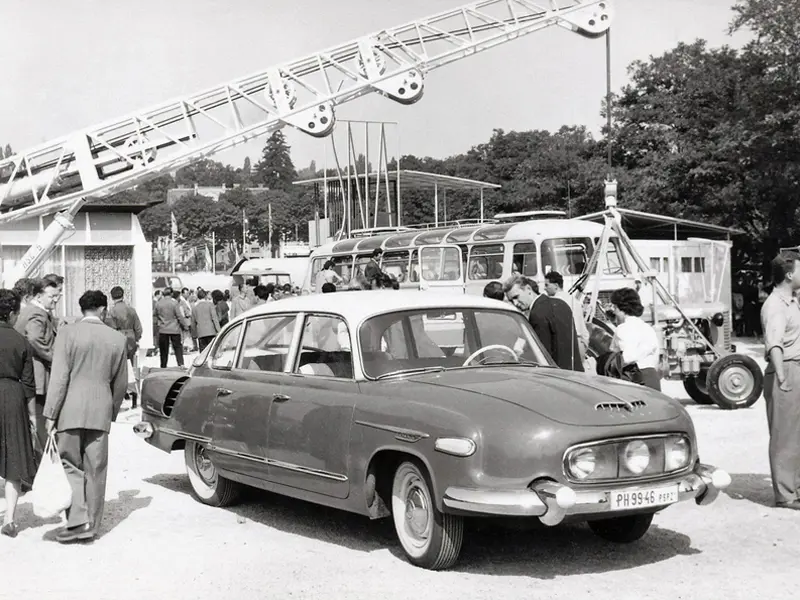THE TATRA T603 – A CELEBRATION
07 July 2022
“The Ministry driver climbed aboard, the man called Ladislav took the passenger seat, the driver pressed a button and the Tatra’s rear mounted V8 engine rumbled into life. Looking around, I noticed all the switches and the steering wheel were in an elegant ivory plastic unlike anything I had seen in Britain”. Alexei Sayle’s first volume of memoirs Stalin Ate My Homework is indispensable reading, not least for his description of family holidays in Prague where he first encountered a vehicle so remote from the traffic of post-war Liverpool as to be surreal.

You can read about Tatra’s early history here and our story commences in 1951 when CZAL – the United Czechoslovakian Automobile and Aircraft Industry, controlled by the Ministry of Defence – decreed that only Skoda would make cars, so work on future models was undertaken in secret. However, in the following year, the government reversed this decision, as they wished for a locally built car for senior party members instead of using the GAZ Pobeda from the USSR. The Chief Designer Julius Mackerle created the monocoque bodywork with power from a lightweight air-cooled 2.5 litre OHV V8 engine mounted at the rear. The 47:53 front-to-rear weight distribution benefited the handling; the top speed was over 100 mph, and the four-speed steering column transmission was available with ‘mountain’ gears.
Tatra unveiled the T603 at the 1955 ‘International Motor Event’ in Gottwaldov (present-day Zlín), but full production did not begin until 1957, with two cars per day leaving the factory. At 98,000 Crowns, the Tatra cost around three times that of a Skoda Octavia but sales were restricted to Party Chiefs, diplomats, and various foreign dignitaries. As Sayle memorably described one Czech holiday, in which his family were treated as VIPS - “a fleet of black Tatra limousines, a car reserved solely for the use of state officials, pulling up outside your campsite didn’t usually mean anything good was going to happen”.
The 1963 model year saw the launch of facelifted T2-603, as immediately recognisable by its four headlamps rather than three headlights under a glass panel and front quarterlights. Later models were unofficially known as the ‘T3’ and boasted a larger windscreen and servo-assisted disc brakes. However, it was a common practice for owners to dispatch older models to the Tatra plant, where they would be rebuilt as a new car. The company began work on its successor in 1968 and the 613 entered production in 1974, retaining the rear-engine layout combined with a new square-cut bodystyle by Vignale and a 3.5-litre DHOC V8 motor. The last of 20,422 T603s left the factory in 1975.
Somewhat inevitably, the T603 was never exactly a common sight in the UK. The company displayed an example at the 1956 Winter Olympics in Cortina d'Ampezzo and one starred at the 1960 New York World Fair, but Western sales were never a major priority. Besides, the idea of a Croydon bank manager deciding to buy a Tatra instead of a Wolseley 6/99 or a Humber Hawk is a fairly outlandish one. Not least because their customers would probably report them to Scotland Yard as a suspected ‘sleeper agent’ and, even worse, there would be an outbreak of mass muttering at the local golf club.
And for a reminder of the many joys of Tatra motoring, here is the famous 1962 promotional film The Happy Journey.
A trio of soigné types travel through Europe to the accompaniment of cocktail jazz, with the rally driver Jaroslav Pavelka actually rolling a T603 down a hill. In the words of Mr. Sayle – “These vehicles were nothing less than the future rendered in metal and glass”.
